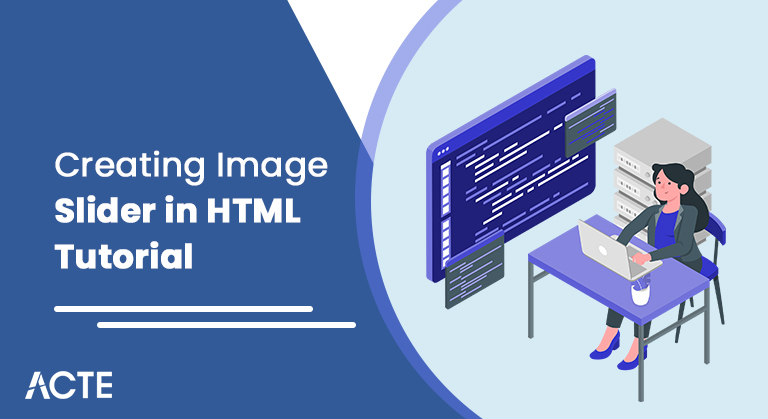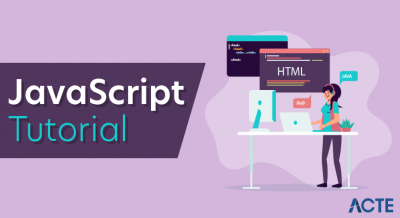
- HTML Introduction
- HTML Versions
- Essential HTML Concepts
- HTML Tags
- HTML Attributes
- Design of a HTML Document
- HTML Images
- Picture Floating
- Current picture designs
- Slide show usefulness
- Spots for route
- Conclusion
HTML Introduction :-
HTML (HyperText Markup Language) is an essential markup language for making sites. It comprises of a progression of codes used to structure texts, pictures, and other substance to be shown in the program.
HTML Versions :-
HTML was first evolved by British physicist Tim Berners-Lee in 1990. Since that time, there have been numerous forms of HTML.
|
| |
|---|---|
| | |
Essential HTML Concepts :-
Components, labels, and characteristics are essential ideas in HTML.
HTML component is a really underlying unit of a site page. HTML labels are utilized to characterize HTML components, and characteristics give extra data about these components.
- HTML labels are utilized to structure site content (text, hyperlinks, pictures, media, and so on) Labels are not shown in the programs, they as it were “teach” programs how to show the substance of the site page.
- There are more than 100 labels in HTML, and you can think that they are in our HTML instructional exercise.
- HTML labels are written in point sections (e.g <'html'>).
- A large portion of HTML labels comes two by two, as labels. The main tag in a couple called the beginning (opening) tag, and the subsequent tag is the end (shutting) tag. The data is composed among opening and shutting labels.
- In any case, there are unpaired, or void labels, which just have opening tag. (for ex. <'img/''>).
HTML Tags :-
How about we think about a model.
Assuming you want to characterize a passage (which is a component ) you should utilize
tag. The substance of the section you ought to compose between opening (<'p'>) and shutting () labels.
Model
This is a section between opening <'p'> and shutting <'/p'> labels.
HTML Attributes :-
HTML credits are added to a HTML component to give extra data about it. For instance, assuming you characterize a picture with tag, you can utilize src, stature, width credits to give data about its source, tallness, width correspondingly.
- The <'!DOCTYPE html'> affirmation determines the HTML rendition utilized in the report. Each HTML record should begin with this revelation so the programs can deliver the page consistent with HTML norms.
- There exist a few kinds of <'!DOCTYPE'> characterized for every HTML rendition.
- All the substance on the page is composed between <'html'> <'/html'> labels. The <'html'> component is utilized to give data to the programs that it is a HTML archive.
- The <'head'> component contains metadata (information about the HTML archive), character set, record title, styles, and so forth This information isn’t displayed to watchers.
- The <'title'> shows the title of the site in the program tab when the page is stacked. The title is composed between <'title'> <'/title'> labels.
- The <'body'> component contains the substance of the site page (text, pictures, recordings, and so on) The substance is composed between <'body'> <'/body'>.
- Heading components contain various kinds of headings. There are six heading levels – <'h1'>–<'h6'>, where <'h1'> is the most significant and <'h6'> least significant labels.
- The <'p'> component contains sections of the text. The substance is composed among <'p'> and <'/p'> labels.
Design of a HTML Document :-
Model :

- To implant a picture to a website page utilize the <'img'> tag.
- The <'img'> label upholds various required and discretionary characteristics, which give extra data about it.
- Linguistic structure: The <'img'> tag is vacant, and that implies that the end label isn’t needed. It contains just properties. However, in XHTML, the (<'img'>) tag should be shut (<'img/>).
- Required Image Attributes – src and alt: The src (source) quality determines the name or the area of the picture to be shown. The worth of src quality ought to contain the name of the picture document or its URL.
HTML Images :-

The alt characteristic is additionally needed for the <'img'> tag. It is utilized to give programs a substitute text in the event that when the picture can’t be shown (if there should be an occurrence of slow association, when a screen peruser is utilized, and so on) Programs frequently show the elective text of the picture as a spring up when you put your mouse over it.
Punctuation of the <'img'> tag with required src and alt credits will resemble this:

Use alt characteristic for every one of your pictures to give catchphrase rich portrayal to web search tools to further develop rankings of your pages. Suggested Image Attributes – width and stature The width and stature ascribes are firmly prescribed to use with <'img'> tag. Assuming that these qualities are utilized, the program saves the spot for the picture when stacking the substance, and this rates up delivering the page.

Illustration of the HTML <'img'> tag with the src, alt, width and stature ascribes:

Picture Floating :-
By and large, the text is over a picture, of course. In any case, the place of the picture and text can undoubtedly be changed with the CSS float property . This property indicates how the picture should drift, or how the text ought to be folded over it.
To show the image on the left side, and text on the right side, add style=”float:left” to the <'img'> tag.
Illustration of the <'img'> tag and the CSS float property for drifting a picture to one side:

- Attempt it Yourself »
- Adding style=”float:right” quality to the <'img'> label positions the text to the left, and the picture to the right.
Illustration of the <'img'> tag and the CSS float property for drifting a picture to one side:

- Attempt it Yourself »
- The most effective method to add hyperlink to a picture
- As the <'a'> tag is utilized for embedding hyperlinks, you simply need to place the picture in the <'a'> tag to make your picture interactive.
Illustration of the <'a'> and <'img'> labels for adding a hyperlink to a picture:

- Attempt it Yourself »
- What picture arrangement to decide for web
- GIF (Graphics Interchange Format)
- JPG/JPEG (Joint Photographic Experts Group)
- PNG (Portable Network Graphics)
There are three fundamental sorts of picture designs upheld by programs:
GIF has 256 special tones that simplify and quick stacking illustrations. You can involve GIF for little drawings, outlines, diagrams, buttons, and other basic designs, that will not keep your page from stacking quick.
JPEG being a 16-bit organization can mix red, blue and green light to show a huge number of shadings. In this manner it is utilized essentially for photos. This configuration gives you the adaptability to pick the amount to pack your picture – from 0% (weighty pressure) to 100 percent (no pressure). You can pick this configuration on the off chance that you wouldn’t fret surrendering some quality for a decrease in size. Try not to involve JPEG for pictures with text, shapes, or huge shading blocks, since when the record is compacted, the lines will obscure and tones will move.
PNG design joins every one of the advantages both the JPEG and GIF designs have, it has a large number of shadings and permits to pack the document with no misfortune in quality. You can involve PNG for web illustrations that require straightforwardness, shading weighty, and complex designs or photos.
Current picture designs :-
1. Today, a few current picture designs are utilized for the web to have more modest, more extravagant, and quicker stacking pictures. WebP planned by Google gives lossless and lossy pressure to pictures on the web. Its fundamental objective is to turn into the essential organization for photos on the web supplanting JPEG. (WebP – Wikipedia)
2. One more arrangement intended to supplant JPEG design is BPG (Better Portable Graphics), which additionally flaunts high pressure proportion (records are more modest than JPEG with a similar quality). HEIC is another picture design that Apple utilizes rather than JPEG in iOS 11. This organization uses present day pressure strategies, which make it conceivable to have higher picture quality in more modest records.
3. We made a variable named currentSlide that stores the list of the current slide to decide the current slide. We likewise made a variable called slides to store each slide into an exhibit which empowers us to repeat over them and one more factor named specks to store every one of the spots in a cluster.
4. Then, at that point, we made a capacity named init that acknowledges a boundary n. The boundary will be currentSlide passed into it. Inside the capacity, we iterated through slides and set each slide’s showcase property to none. While emphasizing through the slides, we additionally repeat through dabs and eliminate the class dynamic from each do. At the point when done setting each slide’s presentation property to none and eliminating the class dynamic from each speck, we then, at that point, set the showcase of current file as indicated by the currentSlide, to hinder and add the dynamic class to the dab of the current record utilizing currentSlide variable.
5. What’s more ultimately, we add an occasion to the window to run the init() work when the HTML content is finished stacking. The Next and Previous usefulness We add this to the index.js document.
6. We made a capacity named close to change the current slide to the following one. Here, I utilized the ternary administrator rather than if-else articulation. Inside the capacity, we checked assuming that the currentSlide is more noteworthy than or equivalent to the last record of the slides (4 – 1 = 3) which is an exhibit. Assuming it is valid, we reset the currentSlide to 0, else we increase currentSlide variable and we run the init() work with currentSlide esteem.
7. For the prev() work, we check assuming the currentSlide variable is not exactly or equivalent to nothing. Assuming it is valid, we set currentSlide to last list of the slides (4 – 1 = 3), else we decrement currentSlide. Lastly we add click occasion on straightaway and past button. At the point when you click on the following button, it runs the following() work and when you click on the past button, it runs the prev() work.
Slide show usefulness :-
To make the slide change naturally, we set a clock that runs the following() work like clockwork. Add this to index.js
- We additionally need to make the spots interactive to progress to the following slide. Add this to index.js
- Here, we emphasize through the spots variable and for each speck, we add a snap occasion and run the init() work passing the record of the dab that is clicked as the boundary and furthermore setting currentSlide to that file.
- Indeed, there’s nothing more to it. We presently have a functioning picture slider.
Spots for route :-
Conclusion :-
I told the best way to make a great slider utilizing HTML and CSS as it were. This consumes less program memory and calculation power. It likewise works assuming JavaScript is handicapped. A debt of gratitude is in order for perusing.






